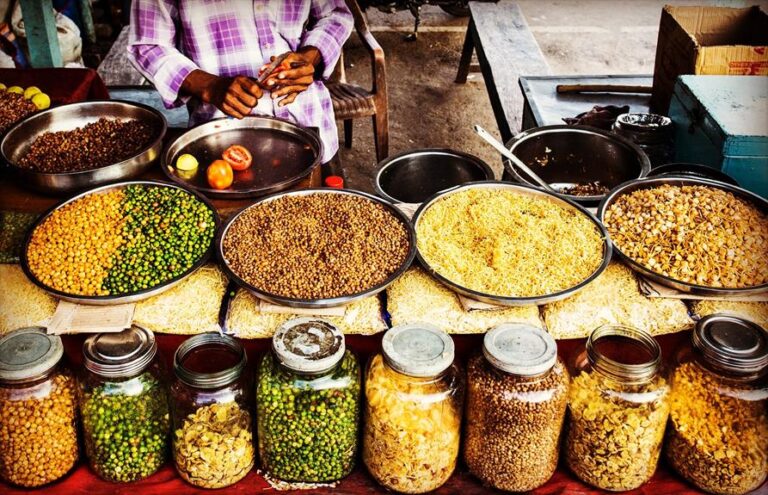Did you know that the humble knife is a fundamental tool in the culinary world, playing a crucial role in every chef's repertoire?
Beyond its basic function of cutting, a knife represents expertise and craftsmanship in the art of cooking.
From mincing herbs to carving meats, its versatility unlocks a world of culinary possibilities.
In this article, we will explore the various types of knives, their uses, and the proper techniques for wielding them, providing a deeper understanding of this cornerstone of the culinary craft.
Key Takeaways
- The knife is an essential tool in the culinary world, serving various purposes such as chopping, slicing, and dicing.
- Proper knife maintenance and safety practices include regular sharpening, using a honing steel, cleaning and drying knives properly, and storing them safely.
- Proper knife handling techniques involve gripping the knife firmly, using a rocking or slicing motion, regularly sharpening the knife, and storing it in a designated storage area.
- Knife sharpening methods include using a sharpening stone, honing the blade, and using electric knife sharpeners, all of which are crucial for maintaining precision and safety in the kitchen.
Importance of a Knife
The knife plays a pivotal role in the culinary world, serving as an indispensable tool for food preparation and cooking. However, it is important to prioritize knife safety precautions to avoid accidents and injuries.
Always handle a knife with care, ensuring a firm grip and proper hand positioning. Keep the blade sharp, as a dull knife can slip and cause accidents.
Additionally, regularly clean and maintain the knife by washing it by hand, drying it thoroughly, and storing it in a safe place. Proper knife care and maintenance will ensure its longevity and optimal performance.
Types of Knives
There are various classifications of knives based on their specific functions and designs. To help you understand the different types of knives, here are some examples:
- Chef's Knife: This versatile knife is a must-have in any kitchen, perfect for chopping, slicing, and dicing.
- Paring Knife: Ideal for precision tasks like peeling fruits and vegetables or trimming small cuts of meat.
- Bread Knife: With its serrated blade, it effortlessly slices through crusty bread without squishing it.
- Santoku Knife: Originating from Japan, this all-purpose knife excels at slicing, dicing, and mincing.
- Boning Knife: Designed for removing bones from meat and fish, it has a thin, flexible blade that allows for precise cuts.
To ensure your knives remain in optimal condition, remember these knife maintenance tips: regularly sharpen your knives, hand wash and dry them immediately after use, and store them in a knife block or on a magnetic strip to prevent damage.
These knife storage solutions will help prolong their lifespan and keep them easily accessible for your culinary adventures.
Knife Maintenance Tips
How can you ensure that your knives remain in optimal condition?
Knife maintenance techniques are essential to keep your knives sharp and efficient. Regularly sharpening your knives not only improves their performance but also ensures your safety in the kitchen. A sharp knife requires less force to cut through ingredients, reducing the risk of accidents. Additionally, a sharp knife provides cleaner, more precise cuts, resulting in better-looking dishes.
To maintain your knives, use a honing steel to realign the blade's edge and remove any burrs. For more extensive sharpening, consider using a whetstone or seeking professional sharpening services. Remember to always clean and dry your knives properly after use to prevent rust and corrosion.
Proper Knife Handling Techniques
To ensure optimal knife performance, it is crucial to master proper handling techniques that promote safety and efficiency in the kitchen. Here are some key techniques to keep in mind:
- Grip: Hold the knife firmly, with your thumb and index finger on the blade's base and the other fingers wrapped around the handle.
- Cutting motion: Use a rocking or slicing motion, keeping the tip of the knife in contact with the cutting board.
- Knife sharpening techniques: Regularly sharpen your knife using a sharpening stone or honing rod to maintain its sharpness and effectiveness.
- Knife storage solutions: Store your knives in a knife block or on a magnetic strip to protect the blade and prevent accidents.
- Cleaning and drying: Hand wash your knives immediately after use, dry them thoroughly, and store them in a safe place.
Knife Safety Tips
Continuing the discussion on proper knife handling techniques, ensuring knife safety is of utmost importance in the kitchen. Knife safety in the kitchen is crucial, especially for beginners who are learning knife skills. Here are some essential knife safety tips to keep in mind:
- Always use a sharp knife: A dull knife requires more force, increasing the risk of accidents. Keep your knives sharp and properly maintained.
- Use the correct cutting technique: Learn and practice proper cutting techniques to minimize the chances of cuts or injuries. Hold the knife securely and keep your fingers safely tucked away from the blade.
- Pay attention and stay focused: Avoid distractions while using a knife. Focus on the task at hand to reduce the risk of accidents.
- Store knives properly: Keep knives in a designated storage area, such as a knife block or magnetic strip, to prevent accidental cuts when reaching for other kitchen tools.
Choosing the Right Knife for the Job
When selecting a knife for a specific culinary task, it is essential to consider its intended purpose and choose accordingly. Here are some factors to consider when choosing the right knife for the job:
- Blade Type: Different culinary tasks require different blade types, such as chef's knives for general purposes, paring knives for precision cutting, and serrated knives for slicing bread.
- Knife Brands: There are various reputable knife brands available, such as Wusthof, Zwilling J.A. Henckels, and Victorinox, known for their quality and durability.
- Handle Material: Knife handles come in different materials like wood, plastic, and stainless steel. Consider the comfort, grip, and maintenance of each handle type.
- Ergonomics: Look for knives with ergonomic designs that fit comfortably in your hand, reducing fatigue and improving control.
- Balance: A well-balanced knife ensures better maneuverability and reduces the risk of accidents.
Knife Sharpening Methods
In the realm of culinary arts, knife sharpening is an essential skill that ensures the precision and efficiency of every cut. A sharp knife is crucial in cooking as it not only enhances the chef's control and accuracy but also reduces the risk of accidents.
There are several knife sharpening techniques that can be employed to maintain the sharpness of blades. One popular method is using a sharpening stone, which involves running the knife along the stone in a controlled motion.
Another technique is honing, which helps realign the edge of the blade. Additionally, there are electric knife sharpeners available that offer convenience and speed.
Regardless of the method chosen, regularly sharpening knives is vital for a chef to deliver impeccable dishes and maintain a safe kitchen environment.
Knife Storage Solutions
To effectively store knives, it is essential to utilize proper knife storage solutions. Here are some knife storage ideas to keep your knives organized and easily accessible:
- Magnetic knife strip: Mount a magnetic strip on the wall or inside a cabinet to securely hold your knives in place.
- Knife block: A wooden or acrylic knife block with slots is a classic and practical option for storing knives on the countertop.
- Drawer inserts: Use knife drawer inserts with slots or compartments to safely store knives in a drawer, keeping them protected and out of sight.
- Knife sheaths or guards: Individual knife sheaths or blade guards can be used to protect the knives and prevent accidents when storing them in a drawer or knife roll.
- Knife storage roll or bag: Ideal for chefs or those who frequently travel with their knives, a knife roll or bag offers safe and convenient storage on the go.
These knife storage containers and ideas will help you keep your knives organized, protected, and easily accessible in your kitchen.
Knife Skills and Techniques
Mastering knife skills and techniques is essential for any cook looking to elevate their culinary expertise.
Knife cutting techniques are fundamental to creating precise and uniform cuts, enhancing the presentation and even cooking of ingredients. Whether it's dicing, mincing, julienning, or chiffonading, each technique requires proper grip, hand positioning, and motion to ensure safety and efficiency.
Additionally, knife selection criteria play a crucial role in achieving optimal results. The weight, balance, and sharpness of a knife can significantly impact the ease and precision of cutting. Chefs must consider factors such as the type of blade, handle material, and overall comfort when choosing a knife.
Common Mistakes to Avoid When Using a Knife
When using a knife, it is crucial to avoid common mistakes that can compromise safety and precision. To ensure a successful and efficient cutting experience, keep the following tips in mind:
- Proper knife grip: Hold the knife with a firm yet comfortable grip, ensuring your fingers are wrapped around the handle and your thumb is resting on the blade's spine for stability.
- Knife cutting techniques: Master various cutting techniques such as the rock chop, julienne, and chiffonade to enhance your culinary skills and achieve consistent and professional results.
- Avoid excessive force: Let the sharpness of the knife do the work for you. Applying excessive force can lead to loss of control and potential accidents.
- Neglecting knife maintenance: Regularly sharpen and hone your knife to maintain its sharpness. A dull knife requires more force and can slip easily, resulting in injuries.
- Improper storage: Store your knives in a knife block or on a magnetic strip to prevent accidents and maintain their sharpness.







